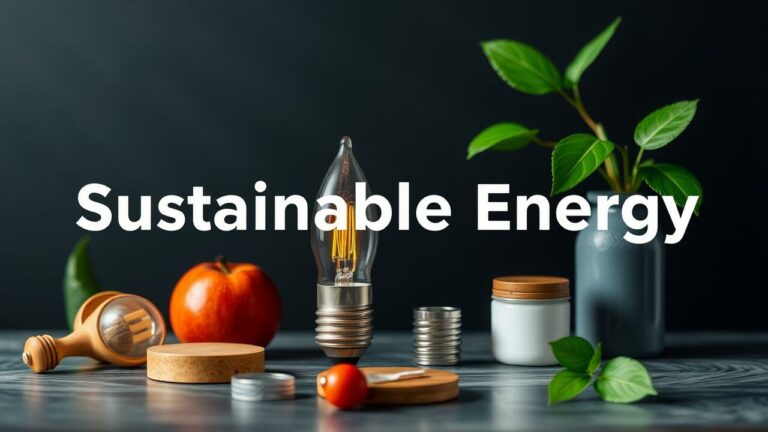Case Studies of Sustainable Initiatives
In a landscape where the tides of change are ever-looming, leading oil companies have embarked on an array of initiatives aimed at weaving sustainable practices into the very fabric of their operations. Take, for instance, the striking commitment from multiple firms to pour resources into renewable energy ventures—a bold step that echoes through the corridors of industry! These corporations have crafted strategies that not only embrace solar and wind energy generation but also intertwine them with their age-old oil extraction endeavors. It’s a fascinating duality: diversifying energy portfolios while simultaneously shrinking their carbon footprints—an audacious display of environmental stewardship!
Moreover, another captivating initiative shines brightly in this narrative—the adoption of enhanced oil recovery (EOR) techniques that ingeniously harness CO2 capture and sequestration. This innovative method permits oil companies to siphon off even more crude from existing reservoirs while tackling emissions head-on! Such approaches illuminate a remarkable willingness to repurpose established infrastructure toward more sustainable ends. Dissecting case studies from these ventures unveils rich insights into both economic viability and environmental gains lurking within the realm of innovation in the oil sector—an exhilarating exploration indeed!
Successful Projects in Leading Oil Companies
A host of prominent oil companies have embarked on bold ventures that place sustainable energy practices at the forefront. Take BP, for instance—this giant has thrown serious financial weight behind renewable energy, funneling resources into solar and wind initiatives galore. This strategy of diversification isn’t just a means to wean off fossil fuels; it’s a calculated move to crown themselves as trailblazers in the march toward a low-carbon tomorrow. These efforts are not merely about compliance with regulatory demands or appeasing eco-conscious consumers—they’re declarations of intent towards true sustainability.
Meanwhile, Shell is making waves with its extensive carbon capture and storage (CCS) strategy across several sites. Imagine technology so effective that it slashes greenhouse gas emissions while enabling ongoing operations without compromising environmental integrity! Their partnerships with tech innovators turbocharge Shell’s ability to adapt, innovate, and weave sustainable methods into the very fabric of traditional oil business practices—truly embodying a forward-thinking approach amidst an ever-evolving landscape.
Sustainable Energy Investment Opportunities
The oil sector’s pivot towards sustainable energy has unleashed a veritable treasure trove of investment opportunities, deftly intertwining environmental aspirations with the allure of financial gain. Heavyweights in the industry are increasingly channeling their resources into renewable initiatives—think wind turbines dancing gracefully and solar panels basking in sunlight. This transformation doesn’t just tick boxes for global sustainability goals; it also diminishes reliance on good old fossil fuels that have long powered our world.
Investors are keen to ride this wave, eager to seize upon burgeoning innovations in clean technologies as they grow more economically attractive by the day. An intriguing tapestry is being woven: fresh partnerships and alliances sprouting between traditional oil giants and forward-thinking renewable energy firms, crafting a rich mosaic of diversified energy portfolios.
Market currents reveal an insatiable hunger for investments steeped in sustainability—fueled not only by regulatory mandates but also by shareholders clamoring for corporate accountability and ethical stewardship. Financial perks are surfacing too, as governments across the globe roll out enticing tax credits and subsidies designed to nudge us toward embracing renewable solutions. Ventures dedicated to boosting energy efficiency alongside pioneering carbon capture, utilization, and storage (CCUS) technologies are drawing considerable interest from savvy investors.
As this dynamic sector navigates a landscape rife with change, capitalizing on these emerging investment avenues might just be the key for companies aiming not merely to survive but truly thrive amidst the evolving future of energy markets.
Understanding Financial Incentives and Market Trends
The tide of investment in sustainable energy within the oil sector is surging, propelled by a cocktail of enticing financial incentives and shifting market currents. Across the globe, governments are rolling out policies that champion renewable energy initiatives while slapping penalties on carbon emissions. Tax credits, grants, and subsidies act as powerful levers for oil companies to pivot toward cleaner energy pathways. Meanwhile, socially responsible investing (SRI) practices nudge businesses into adopting greener operations—this not only boosts their reputational capital but also opens doors to fresh funding avenues.
Amidst this backdrop, market trends paint a vivid picture of sustainable investment’s evolution in the oil industry. The worldwide movement toward decarbonization has stirred consumer preferences like never before, driving an insatiable appetite for cleaner energy solutions. This transformation ripples through strategic choices made by leading oil firms as they start to diversify their portfolios with renewable projects. As consciousness about climate change deepens among stakeholders, sustainability rises higher on their priority list. Henceforth, weaving sustainable practices into the fabric of operations doesn’t just reduce risks; it holds the promise of long-term financial gains for investors—a compelling prospect that positions the oil sector at the brink of a revolutionary shift into a greener future.
| Incentive Type | Description | Impact on Oil Companies |
|---|---|---|
| Tax Credits | Reductions in tax liability for investments in renewable energy projects. | Encourages companies to allocate funds towards clean energy initiatives. |
| Grants | Direct funding provided by governments for specific green projects. | Offers financial support to jumpstart renewable energy projects without the burden of repayment. |
| Subsidies | Financial assistance to make sustainable energy solutions more affordable. | Enables oil companies to competitively price their renewable energy offerings. |
| Penalties on Carbon Emissions | Fees imposed on companies that exceed designated carbon emissions thresholds. | Drives firms to adopt cleaner technologies to avoid financial penalties. |
Challenges Faced by the Oil Industry
Transitioning to sustainable practices poses a labyrinth of challenges for traditional oil companies, each more daunting than the last. Regulatory hurdles crop up like unexpected roadblocks; policies often struggle to keep pace with the whirlwind of technological advancements that are reshaping the industry. Meanwhile, an ever-watchful eye from governments and investors intensifies scrutiny—these firms find themselves under mounting pressure to showcase their commitment to environmental stewardship.
The landscape is further complicated by the erratic nature of global oil prices, which turns financial forecasting into a high-stakes guessing game for sustainable initiatives. This unpredictability can stifle long-term investments in cleaner technologies, creating a chilling effect on innovation.
But perhaps most insidious is the resistance within these well-established organizations—a kind of inertia that clings stubbornly to outdated practices and mindsets even when change beckons urgently. Internal cultural barriers loom large, obstructing any meaningful progress as companies grapple with entrenched attitudes toward risk and investment. To add another layer of complexity, existing infrastructures are often ill-equipped for alternative energy solutions; retrofitting or overhauling systems becomes not just costly but also a logistical nightmare.
All these factors intertwine in a web that significantly hampers the industry’s agility in adapting to an evolving energy environment—a realm where flexibility and foresight have never been more crucial.
Overcoming Barriers to Sustainable Transition
The oil industry stands at a crossroads, grappling with an array of formidable challenges as it endeavors to weave sustainability into its very fabric. At the heart of this struggle lie steep capital expenditures tied to the adoption of cutting-edge technologies and the retrofitting of aging infrastructure. Compounding the issue, regulatory frameworks often trail behind rapid industrial advancements, casting a shadow of uncertainty over companies eager to break new ground in innovation. Legacy systems—those entrenched around time-honored methods of oil extraction and refining—further complicate matters, as established operations may cling stubbornly to their old ways, daunted by the intricate dance required for transition.
Navigating these hurdles demands a nuanced strategy that interlaces investment in research and development with collaborative efforts among diverse stakeholders. Governments hold pivotal sway here; by crafting incentives for sustainable practices, they can cultivate an atmosphere ripe for breakthroughs in energy technology. Alliances formed between traditional oil enterprises and renewable energy innovators can spark dynamic exchanges of knowledge while channeling investments toward solutions that bolster sustainability without sacrificing economic viability. By strategically weaving advanced technologies into their operational tapestry, companies may find pathways to heightened efficiency—an essential step on the journey toward a more verdant future.
- Transitioning to sustainable practices requires substantial capital investments in new technologies and infrastructure upgrades.
- Regulatory frameworks must evolve in tandem with industry advancements to minimize uncertainty for companies.
- Resistance from legacy systems can hinder progress, necessitating strategies that facilitate gradual modernization.
- Collaborative partnerships between oil companies and renewable energy sectors can accelerate innovation and knowledge sharing.
- Governments play a crucial role in incentivizing sustainable practices through supportive policies and funding.
- Investing in research and development is vital for finding effective, sustainable solutions in the oil industry.
- Companies must focus on integrating advanced technologies to improve efficiency and sustainability in operations.
The Role of Technology in Energy Transition
The landscape of the oil sector is undergoing a seismic shift, driven by innovations in technology that are not merely incremental but transformative. Picture this: advanced data analytics and artificial intelligence weaving their way into the very fabric of operations, empowering companies to fine-tune resource management with an almost surgical precision while slashing waste to ribbons. Suddenly, real-time monitoring of environmental impact becomes the norm—decisions are no longer shots in the dark but informed choices backed by robust data.
And then there’s blockchain technology—a game-changer that injects a dose of transparency into supply chains like never before. It cultivates accountability among stakeholders, turning what once was murky waters into crystal-clear streams of information flow and efficiency.
Meanwhile, investment in renewable energy technologies is gaining serious traction within these oil behemoths. They’re diving headfirst into hydrogen production, exploring cutting-edge energy storage solutions, and embracing carbon capture utilization and storage (CCUS) as if they were golden tickets for emission reductions. This paradigm shift isn’t just about ticking boxes for regulatory compliance; it mirrors an urgent response to consumers’ burgeoning appetite for sustainable energy sources.
As digital innovation intertwines with renewable technologies, we can expect a delightful cocktail of substantial cost cuts paired with an uplifted sustainability profile across oil operations—a marriage between tradition and modernity poised on the brink of revolution!
Advanced Solutions for Sustainable Oil Operations
The oil sector is undergoing a fascinating transformation, thanks to groundbreaking innovations in technology that are pivotal for sustainability. Picture this: advanced data analytics and artificial intelligence weaving their magic into extraction processes—waste minimized, efficiency maximized! These cutting-edge technologies empower companies to keep a finger on the pulse of real-time performance, pinpointing areas ripe for improvement at lightning speed.
But wait, there’s more! The integration of renewable energy sources with traditional operations adds another layer of intrigue, boosting overall energy efficiency and smoothening the transition towards a greener framework. It’s like blending old-school and new-age techniques into a harmonious dance.
Now let’s dive deeper into carbon capture and storage (CCS) techniques—an exhilarating leap forward in mitigating the environmental toll of oil operations. Imagine capturing carbon dioxide emissions during production and tucking them safely underground; it’s an ingenious way for companies to slash their carbon footprint dramatically. And don’t overlook the rising star of biofuels crafted from waste materials—a tantalizing path toward diversifying energy sources while keeping production lines humming smoothly.
These innovative strategies vividly illustrate how the oil industry can pivot gracefully amidst evolving environmental expectations while steadfastly maintaining its vital role in the ever-changing global energy landscape. Exciting times lie ahead!
Future Outlook for Sustainable Energy in the Oil Sector
The oil sector is in the throes of a seismic shift, one that’s sculpting its landscape with an urgent pivot toward sustainable energy practices. Picture this: major players in the industry are pouring resources into renewable energy solutions, weaving them into their long-term visions like threads in a vibrant tapestry. Why? The clamor for environmental responsibility swells louder by the day, fueled by mounting regulatory pressures aimed at slashing carbon emissions to the bone.
Enter technologies such as carbon capture and storage (CCS), coupled with innovative enhanced oil recovery techniques—these aren’t just buzzwords; they represent vital steps forward in bolstering the sector’s sustainability credentials. Companies daring enough to embrace these cutting-edge innovations might find themselves not only polishing their public image but also unlocking potential financial windfalls.
In a bold move, many leading oil giants are expanding their horizons, diversifying portfolios to encompass renewable energy projects—a savvy acknowledgment that fossil fuels will linger within our global energy cocktail for now. Strategic partnerships with tech pioneers and hefty investments in R&D are no longer optional; they’re crucial for sparking inventive solutions that tackle today’s pressing dilemmas head-on. As consumer appetites for cleaner energy intensify, it becomes imperative for oil companies to navigate this shifting market terrain adeptly. By successfully embedding sustainable practices into their operations, they can safeguard not just their own futures but also play a key role in advancing global sustainability objectives.
Predictions and Strategies for Long-term Viability
The future of sustainable energy in the oil sector is a tangled web, woven with threads of innovation, regulatory frameworks, and market responsiveness. Companies are poised to embark on an ambitious journey—prioritizing investments in renewable technologies and carbon capture systems. This isn’t merely about ticking boxes for environmental compliance; it’s about carving out a competitive edge in an energy landscape that shifts like quicksand beneath their feet.
Collaboration emerges as the lifeblood of this transformation—bringing together industry players, government entities, and local communities into a dynamic dance. Together they’ll sculpt strategies that spotlight transparency and shared benefits—a vital recipe for reinforcing that elusive social license to operate.
As we peer into the next few years, companies must grapple with defining robust metrics for sustainability performance while scrutinizing their ripple effects on both ecosystems and community livelihoods. Forming strategic alliances with tech innovators could unlock breakthroughs in energy efficiency and propel sustainable practices forward at breakneck speed. Aligning corporate ambitions with global sustainability mandates like the Paris Agreement isn’t just advisable; it’s imperative.
Moreover, reimagining business models through the lens of circular economy principles will not only fortify resilience but also secure long-term survival amidst the unpredictable tides of market fluctuations. The path ahead is complex yet ripe with potential—a thrilling odyssey toward a more sustainable tomorrow awaits!
Conclusion
The pivot towards sustainable energy in the oil sector marks a crucial metamorphosis, spurred by urgent environmental dilemmas and shifting market pressures. Industry stalwarts are waking up to the reality that weaving renewable sources into their fabric and embracing cutting-edge technologies can do more than just shrink carbon footprints—it can supercharge operational efficiency! Pouring resources into green initiatives isn’t merely an option; it’s a savvy maneuver for oil companies wrestling with the labyrinthine challenges of energy transition. By tapping into financial perks and syncing up with fresh market dynamics, these firms can carve out advantageous niches in a rapidly evolving arena.
But let’s not kid ourselves—this journey will be no walk in the park. The hurdles lurking within this transformation demand a united front from all players involved: governments, businesses, consumers—you name it! Breaking down obstacles and cultivating fertile ground for sustainable growth is absolutely vital if we’re to redefine what the future holds for the oil industry. Strategies infused with innovative tech solutions will be essential for making sustainability more than just a buzzword. As our global economy shifts toward greener horizons, how well the oil sector adapts could very well dictate its longevity—and shape its place within the expansive energy ecosystem at large!






